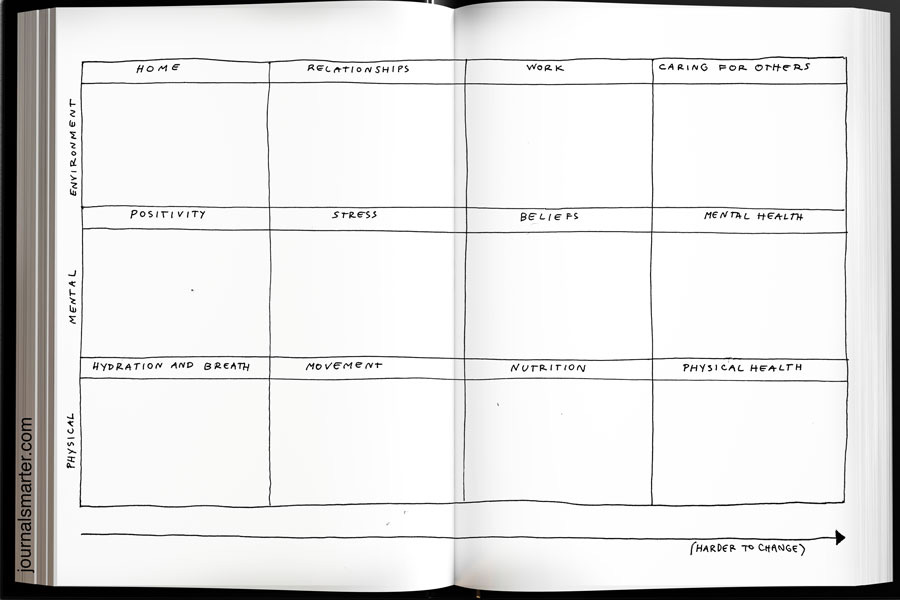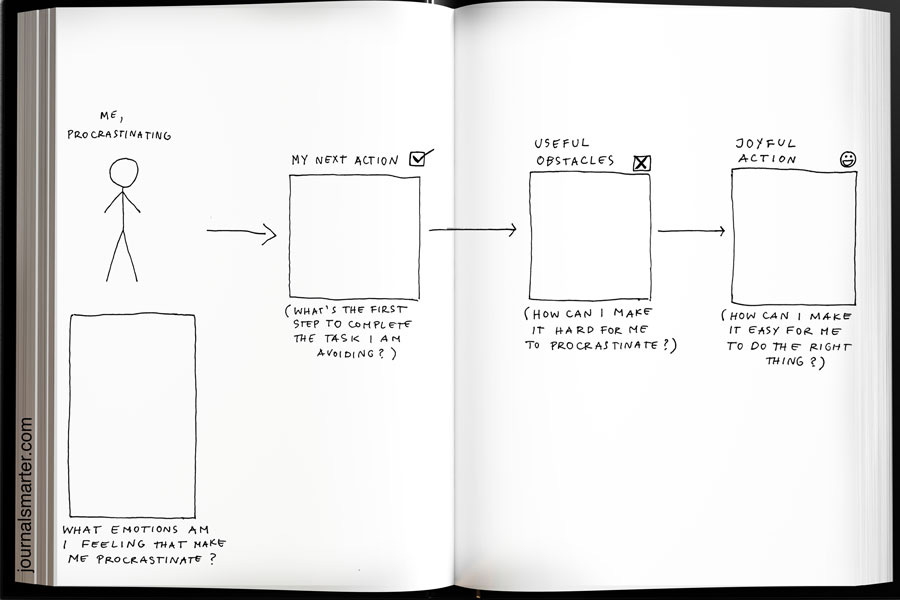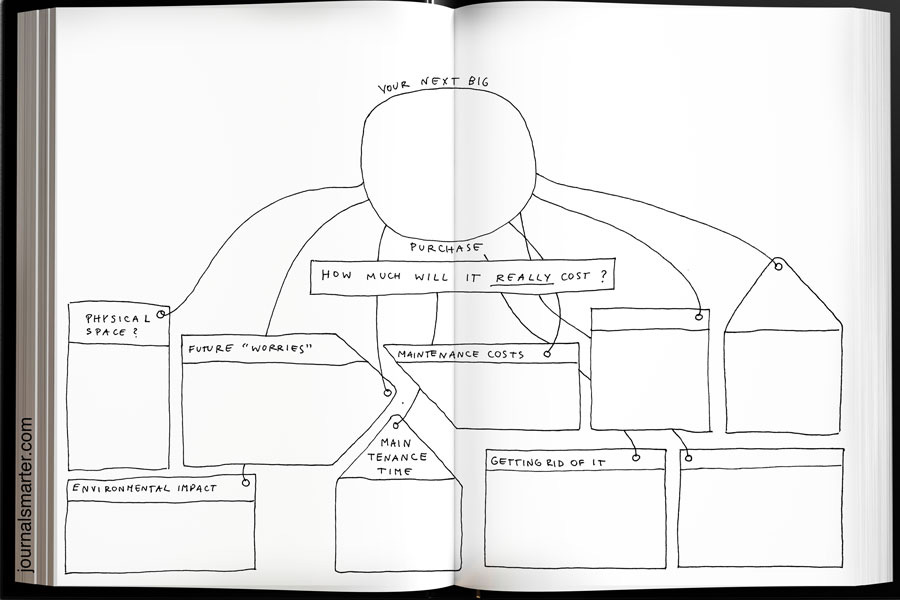Effective Journaling Tips for a More Productive Life

Optimising your productivity is not often easily done without the right planning. Putting pen to paper tends to prove the most useful way to set out your intentions.
If this is not so easily done with simple bullet points or shorthand, the creative folks at Journal Smarter recently enlightened us with their list of journaling techniques to help move things along.
Compiled by Michal Korzonek, tools from world-class thought leaders have been neatly translated into journaling templates on the subjects of planning, becoming a communication master, expanding your perception and living a more balanced life, among others.
Reinterpreting the teachings of notable authors such as Tim Ferriss and Mark Manson into easy to follow grids, below, we’ve highlighted a few of our favourites to put into action.
Dot Zacharias’ Sleep Heat Map

Get the best from your shuteye by focusing on areas of your life you consider to a have the biggest impact on your sleep.
Sixteen factors come into play here, which are divided into the categories of environment, mental and physical.
Its recommended that you copy this into your journal and score each category from 1 to 10, 10 being no problem and 1 meaning it needs a lot of work. Then, write down some keywords in each box about what can be done to improve these factors.
Charlotte Lieberman’s Procrastination Loop

In New York Times journalist Lieberman’s article “Why You Procrastinate (It Has Nothing to Do With Self-Control)”, the core idea expressed is that procrastination is an emotional feedback loop.
The process begins with a challenging emotion surfacing such as self-doubt or stress, procrastination provides temporary emotional relief, you feel bad for procrastinating, and so the emotions become stronger still.
Her practical solutions to break the loop are to be curious about your emotions to get to the root of why you procrastinate, break the task down to smaller actions, limiting temptation of distraction (by hiding your phone, for example) and removing points of resistance that make what you do difficult.
You might consider journaling as something of a procrastination from your task at hand, but this spread should help you express Lieberman’s sentiment.
Lionel Rosen’s Process Thinking

Where we often lose out on achieving our long-term goals is by losing sight of the short-term actions that will take us there. This tip is all about focussing on the next logical consecutive point on the journey to completion.
Rosen’s method puts it that you shouldn’t only think about the letters “A” and “Z” in your journey, but the entire alphabet. Keep the endpoint in mind as you get started, but quickly revert back to B to ensure progress remains steady.
Ryan Holiday neatly highlights the success story of American college football coach Nick Saban’s use of this process in his Observer article.
Leo Babauta’s The True Cost of Stuff

Based on minimalist Babauta’s definitions of additional costs to what we buy that aren’t reflected in the RRP, this journaling technique justifies your investments to avoid buyer’s regret.
It factors in elements such as the physical space your purchase will take up, damage to the environment, how much you’ll worry about it, your dependence to it, plus energy and maintenance costs.
Spend time to really consider what you spend your money on and if it’s truly worth it by using the journaling technique above.
_
Read all 41 journaling exercises for mind expansion and effective behaviour change here.


















